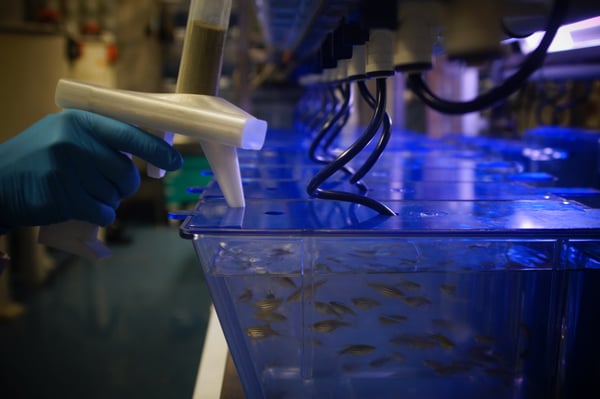The use of animal models involves the preclinical testing of live animals in order to establish the likely impact of treatments upon humans. It is estimated that 100 million vertebrates are subjected to such scientific testing each year.
While scientists have traditionally used rodents, an increased ethical focus has prompted the use of alternatives such as the C. elegans, fruit fly, and zebrafish. The use of such animal models has proven essential in the development of drugs, treatments, and cures of human diseases.
Continue reading to find out why animal models are so important for understanding human diseases.
Why Are Animal Models Important For Understanding Human Diseases?
Animal testing can be traced back to the ancient Greeks. However, the development of modern science has been combined with a marked increase in the contribution of animal models over the last couple of centuries. Some remarkable developments include the generation of the smallpox vaccine, tetanus, and modern anesthetics that occurred from the mid 19th to the 20th century. More recent contributions have included the development of medicines for type 2 diabetes and deep brain stimulation for Parkinson’s disease to name just a few.
Generally speaking, the closer evolutionary relationship between the experimental animals and humans, the greater predictive indicator for toxicity and efficacy of medical treatments. Animal models will ideally be homologous, meaning that they would respond to the experimental treatment in a very similar way as humans would.
Sharing around 90% of the human genome, rodents have traditionally been chosen for animal testing. However, factors such as regulatory requirements, increased ethical concern and the need for mass testing have motivated scientists to use a variety of alternative models.
Zebrafish have become one of the most widely used model organisms for genetic and developmental studies. These tiny fish share over 80% of human disease-associated genes and have a particularly rapid development process, producing hundreds of transparent eggs per fish. The sequencing of the zebrafish genome was totally completed with the discovery that they contain a large number of counterpart genes responsible for the development of human diseases.
Zebrafish have played a key role in the following scientific developments:
- Developmental biology
- Tissue regeneration
- Heart disease
- Cancer
- Neurodegenerative diseases
- Improved understanding of tuberculosis mechanisms
- Modeling of the human influenza virus (leading to the creation of improved vaccines)
- Covid-19 studies
3Rs Animal Testing
There has been an ongoing debate about the use of live animals in scientific experiments. Improved awareness and campaigning have resulted in a great reduction in the use of species such as dogs, pigs, and monkeys. The use of such genetically close models in science has allowed for a greater understanding of animal internal responses such as pain and stress. This has led to improved treatment and a greater respect for animal rights. A complete ban on the sale of cosmetics developed through animal testing has already taken effect in the EU. On the other hand, the U.S. Environmental Protection Agency also announced that it will stop conducting or funding studies on mammals by 2035.
The increased ethical focus has had a direct implication on the use of alternative animal models in accordance with the 3R Principles. Widely adopted by international governments and agencies, the 3Rs correspond to the Reduction in the number of animals used, Refinement of experimentation to minimize suffering, and Replacement of animals with alternatives such as in vitro studies, cell cultures and computer-generated models.
The Zebrafish model aligns perfectly with the adoption of the 3Rs, as assays that are performed with fish under 5 days post-fertilization are considered in vitro studies. Derived from the Latin term meaning ‘in glass’, in vitro studies do not involve the use of a live organism, with the exception of Zebrafish that fall out of this classification once they can feed independently.
In vitro studies have been associated with a greatly increased success rate, reduction in Drug Development time, and reduced costs.
Other advantages associated with the use of Zebrafish include:
- Cost-effectiveness when compared with the modeling of other species
- Relatively high level of biological relevance to humans
- Potential for mass testing allowing for the generation of statistically significant results
- Transparency that allows the use of image analysis and High Content Screening.
Animal testing continues to play a key role in the study and development of therapeutic drugs for the treatment of most human diseases. The ability to test on other organisms before testing on humans is why animals models are important for understanding human diseases. The ability to conduct in vitro studies makes Zebrafish the ideal choice, given the need for new and improved treatments. Suitable for testing across a wide range of industries, Zebrafish are chosen for their demonstrated efficiency and ethical reasons.






